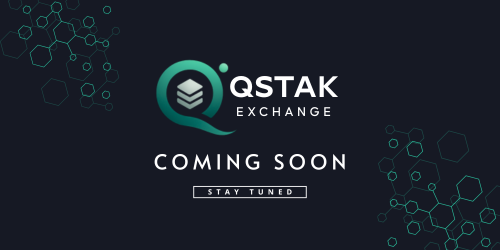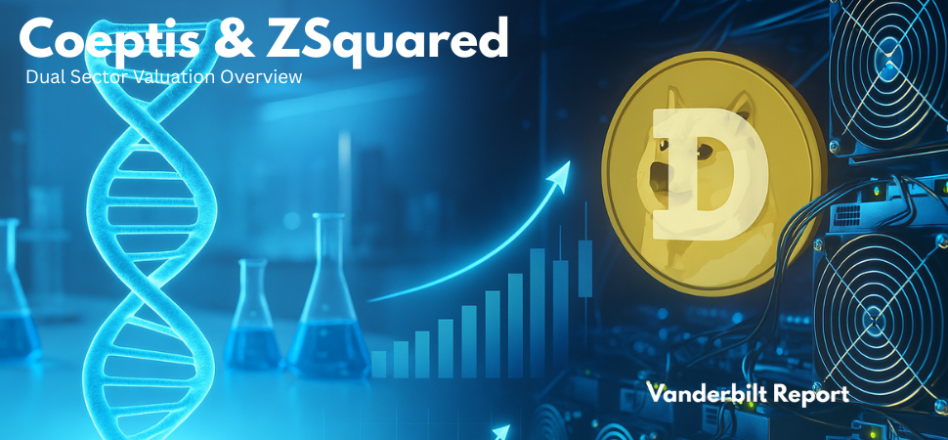Qstak-Exchange Just Cracked The Crypto Code

- PublishedSeptember 20, 2025
Qstak Exchange Just Cracked The Crypto Code
A new exchange architecture is rewriting the rules of cryptocurrency trading.
I’ve been investigating breakthrough developments in digital asset platforms, and one innovation stands out. The Exchange represents a fundamental shift in how we think about trading infrastructure.
The platform combines three revolutionary elements that haven’t been unified before.
First, they’ve solved the quantum computing challenge ahead of the curve.
While experts predict quantum computers will emerge within five to 10 years, Qstak™ is implementing post-quantum cryptography standards today.
Their system uses ML-KEM for key establishment and ML-DSA for digital signatures. These algorithms, finalized by NIST in August 2024, represent the cutting edge of cryptographic security.
The innovation goes beyond just implementing new algorithms.
Qstak’s architecture creates a hybrid approach that maintains compatibility with existing blockchain infrastructure while adding quantum resistance. This solves the transition problem that has stumped other platforms.
Second, they’ve cracked the custody paradox.
Traditional exchanges centralize funds for liquidity but create massive security risks. Self-custody solutions provide security but sacrifice user experience and liquidity.
Qstak’s breakthrough keeps private keys with users while delivering exchange-grade liquidity.
Their system generates and stores keys within device secure elements. Signing occurs inside these protected environments, then orders relay to the matching service.
The matching engine processes trades while settlement happens from user-controlled wallets. Where blockchain features permit, atomic swaps eliminate counterparty risk entirely.
This architecture removes single points of failure without sacrificing performance.
Third, they’ve revolutionized the cost structure.
Current exchanges charge 0.10% to 0.40% in trading fees. Qstak™ targets 0.01% on supported pairs.
That’s a 90% cost reduction achieved through architectural innovation.
By eliminating custody infrastructure and reducing operational overhead, they can pass massive savings to users. The self-custody model removes entire layers of traditional exchange costs.
The user experience innovation might be the most impressive.
Qstak™ transforms complex cryptocurrency interfaces into bank-like workflows. They target onboarding times under three minutes to first trade.
The platform provides human-readable confirmations, policy checks, and simplified controls while maintaining advanced functionality for professional traders.
This addresses the accessibility barrier that has limited mainstream cryptocurrency adoption.
I examined their recovery system innovation closely.
They use multi-party computation with threshold configurations. Users can designate trusted contacts or additional devices as guardians for account recovery.
The system balances security with usability through configurable policies and social recovery options.
The regulatory compliance innovation deserves attention.
Qstak™ integrates compliance frameworks throughout the platform rather than bolting them on afterward. Their system handles registration requirements, Bank Secrecy Act obligations, Travel Rule compliance, and sanctions screening.
This proactive approach to regulation positions them ahead of platforms scrambling to retrofit compliance.
The technical architecture reveals sophisticated engineering choices.
Where chains lack native atomicity, they implement time-locked contracts and watchtowers to mitigate settlement risk. The system adapts to different blockchain capabilities while maintaining consistent user experience.
The market timing appears strategic.
Analysis shows 32.7% of Bitcoin’s current supply faces quantum vulnerability. That represents over $700 billion in potentially compromised assets.
Qstak™’s quantum-resistant infrastructure positions them to capture market share as quantum computing advances accelerate.
The innovation extends to their development approach.
They emphasize secure development practices, independent security reviews, and transparent communication about system effectiveness. This builds trust through verifiable security rather than marketing claims.
The scalability considerations show forward thinking.
Post-quantum algorithms require larger key sizes and increased computational overhead. Qstak™’s architecture accounts for these requirements while maintaining performance.
They’ve designed the system to handle the transition period when both classical and quantum-resistant cryptography must coexist.
The competitive positioning is compelling.
While established exchanges focus on incremental improvements, Qstak™ is building next-generation infrastructure from the ground up.
Their approach combines breakthrough security, revolutionary cost structure, and innovative user experience in a single platform.
The implications extend beyond individual trading.
Qstak™’s model could influence how the entire cryptocurrency ecosystem approaches security, custody, and user experience.
Their innovations address systemic risks while creating new possibilities for digital asset adoption.
The platform represents a comprehensive rethinking of exchange architecture rather than iterative improvements to existing models.
The complete technical specifications are detailed in Qstak™’s comprehensive whitepaper.
DOWNLOAD WHITEPAPER
The document outlines their post-quantum cryptographic implementation, self-custody architecture, and regulatory compliance frameworks. It provides in-depth analysis of their matching engine design, settlement mechanisms, and user experience innovations.
For developers and institutional users, the whitepaper includes technical specifications, and integration guidelines. The transparency demonstrates their commitment to open development and peer review.
This level of innovation positions Qstak™ to define the next generation of cryptocurrency trading infrastructure.







